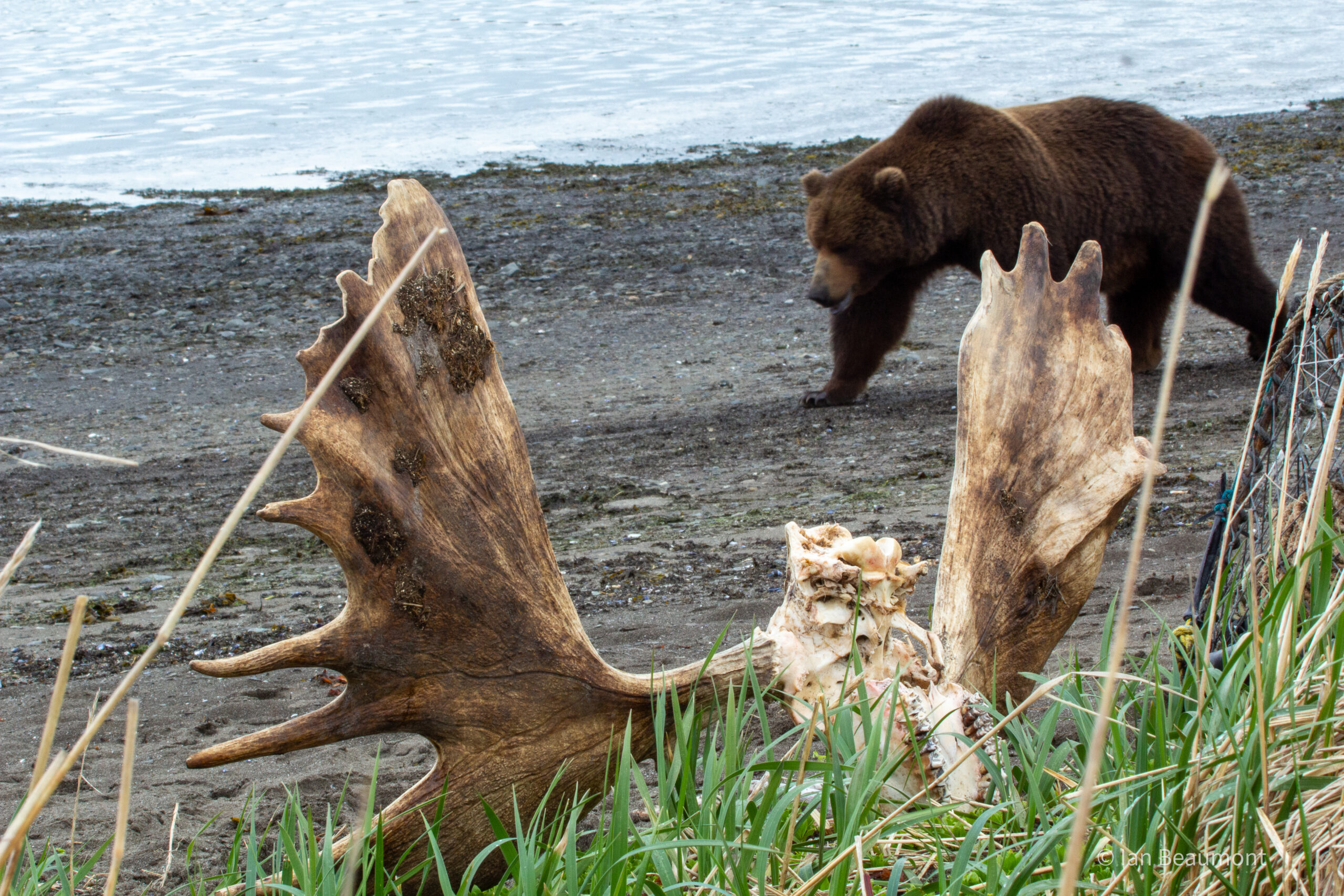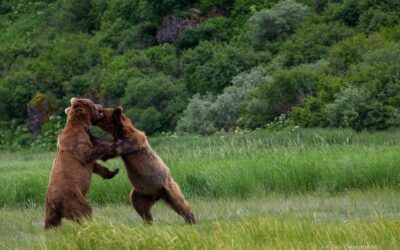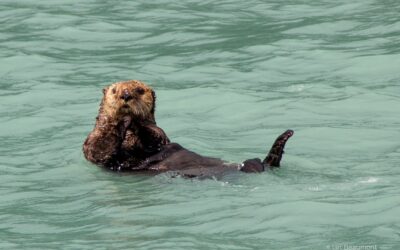The float plane banks around the mouth of the bay, and then I see it—the green roofs of Katmai Wilderness Lodge, just as we left her five long, cold months ago. We glide down, skimming the surface of the water, and then the engine winds down, leaving only the deep, pervasive quiet that defines this place. The lodge sits empty and still, as if patiently waiting for our return.
Near the edge of the brush, something catches the light—flat, white, and impossibly wide. It’s a moose rack, nearly 70 inches across, the skull still attached between the antlers. A remnant of a bear’s final meal before hibernation, most likely taken down just after we departed in the fall. Now it lies bleached by the wind and sun, a haunting reminder of how much time has passed, and that this wilderness is not ours. We are only visitors here.
Over the next few days, we begin the slow process of waking the lodge from its winter slumber. Water lines are reopened, shelves are dusted, windows unlatched. The buildings exhale the must of disuse. The bears have left a few calling cards—claw marks on wood, a bitten hose—but overall, things are just as we left them. The place feels paused, not abandoned.
Outside, the land stirs with us. It’s late April, and winter is loosening its grip. The mud flats out front squish underfoot as we check for damage, and already, we spot signs of change. Green shoots push through cold soil. Songbirds flit through the underbrush. Across the channel, a sly red fox trots along the shoreline—the first we’ve seen since wolves started wintering here several seasons ago.
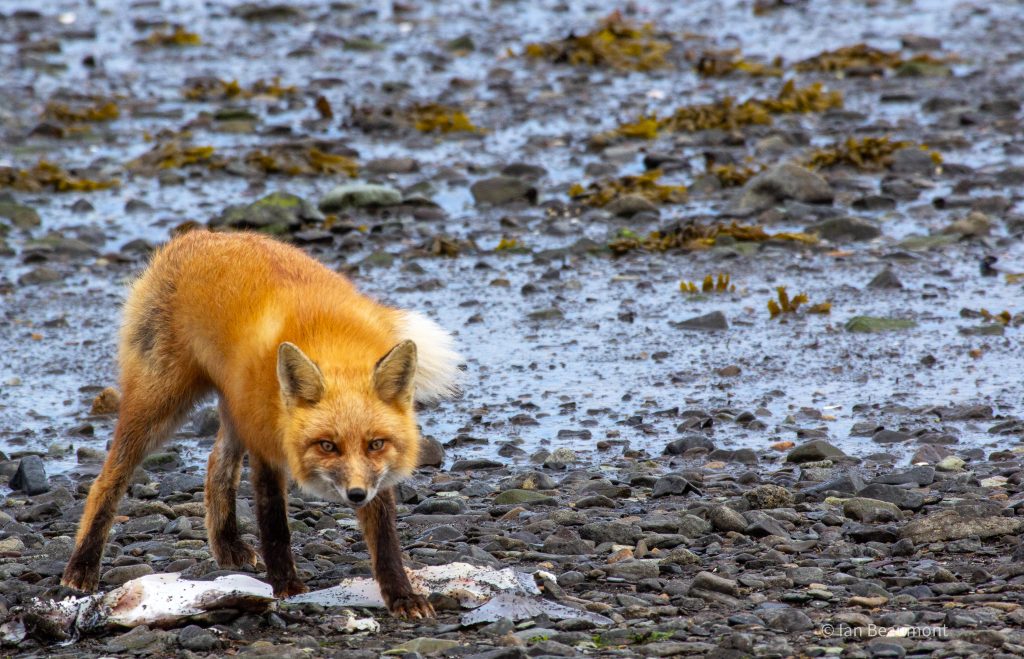
A sly red fox trots along the shoreline
Bears, solitary and hungry, lumber across the flats at low tide, digging for clams and mussels. A warm winter has left them relatively well-fed, but the hunt for food and resources never ends.
Moose appear on the flats after the fog lifts, tentatively stepping out of the thick brush to forage for seaweed and algae, their budding new antlers covered in soft velvet.
In the weeks ahead, we will watch this landscape transform. The meadows will flush with wildflowers, a riot of color beneath a brightening sky. The hills will green, and the snowmelt will swell the rivers, sending icy streams rushing down from the high peaks. The sows (female bears) will arrive next, cautious and watchful, with tiny spring cubs at their feet.
This transition feels like a homecoming—one that is both humbling and sacred. To witness a place like this reawaken is to be reminded of how much life moves in cycles, both wild and enduring.
Like the land around it, the lodge is moving through its own cycle of change. The lodge remains closed to visitors as we undertake long-planned renovations and care for the place itself. It will open again—familiar in many ways, but not quite the same. Just as the snow gives way to spring and the bears return to the flats, the lodge, too, is shifting, renewing, and preparing for what’s next. The rhythm continues—quietly, steadily, and always forward.
